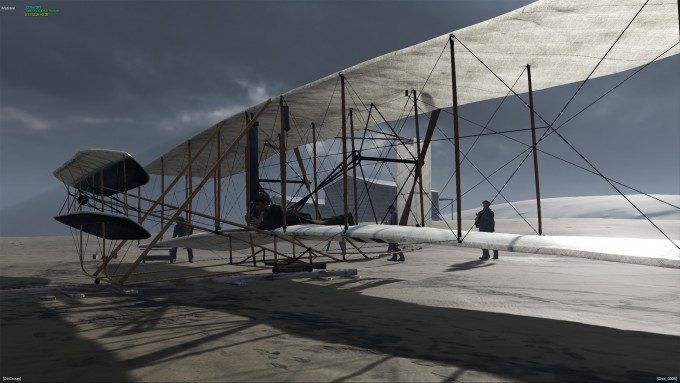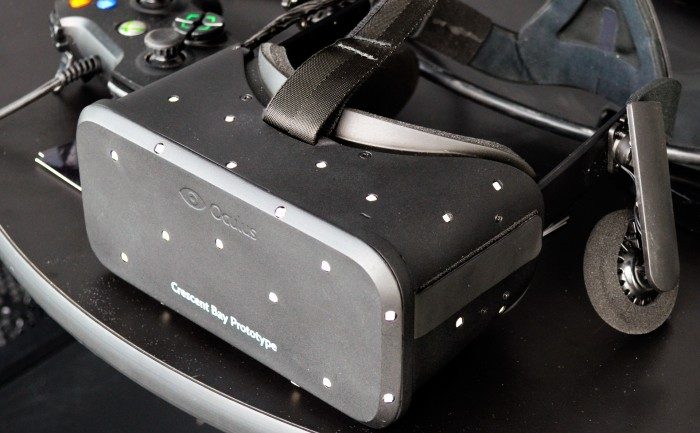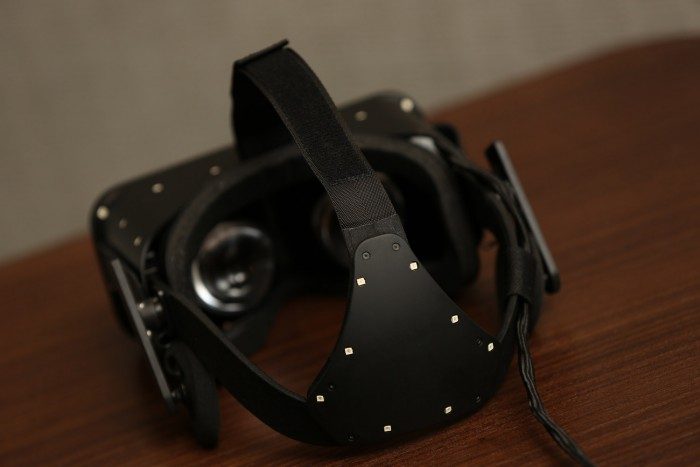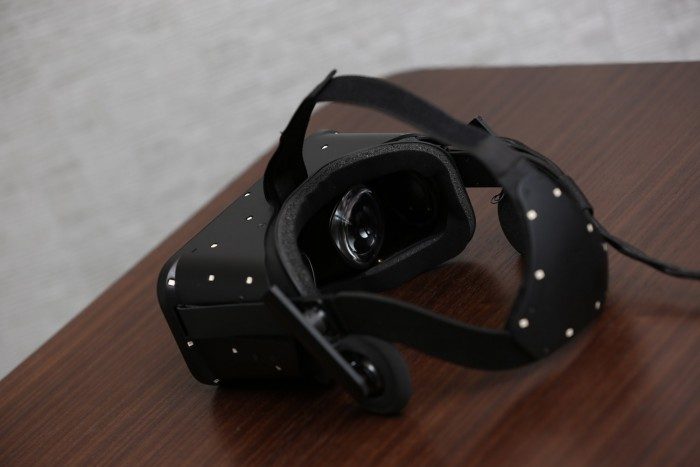Wright Brothers First Flight
Now, virtually no one else has talked about the Wright Brothers First Flight experience, but it’s basically an accurate recreation of when the Wright Brothers launched the first successful flight of their air plane, an experience created by Zypre with cooperation from the Smithsonian.
A great amount of detail was put into this, from the accuracy of the modeled plane itself, to the rippling of the wings from wind, and to the realistic metallic screech of the propellers getting fired up. At one point, the plane would be flying towards you, and my body just naturally told me to dodge it by getting down low — a lot of object presence there, in which the object is felt by the mind like it is taking up a physical space in real life.
Then I realized just how real the sound actually was; I heard clapping and shouting at one point in the demo, and I thought it was emanating from my physical surroundings, until I looked over and saw it was the people in my virtual world making those sounds. At that moment, a small switch in my brain flipped, and I got a fleeting sensation that the people who were clapping and running beside me, were actually there beside me in real life.
Notes on Oculus’ Crescent Bay VR headset
So that was my experience with some of the content SIGGRAPH has to offer, but I came upon some things perhaps others haven’t about the hardware.
AMD was using Crescent Bay paired with the R9 Fury X, with Back to Dinosaur Island 2, and the Wright Brothers First Flight experience. I actually got to try Oculus’ Crescent Bay with those demos at least 9 times. In addition to having ‘fondled’ the headset quite a bit as I just hung around the booth and talked to people, I even helped AMD give demos when one of the representatives wasn’t available at times.
First of all, after getting so much experience with the headset and adjusting everything on it, I was able to slip it on just like I’d just put on a baseball cap, in both procedure and comfort levels.
I also noticed that the headset felt lighter in the hand than any other headset I’ve tried, including the Vive, DK2, Gear VR, and Sony’s Project Morpheus.
The 3 straps are really easy to adjust and get comfortable for you once you get used to it. You basically separate the velcro parts, put on the headset, and then pull on the straps until the tightness feels right, locking it into place with the velcro again. Imagine there were small pulley systems in place. I cannot over emphasize how easy it was to adjust the straps and have them locked in place exactly where they’re comfortable.
The headphones and the sound quality on the Crescent Bay were great, producing very realistic levels of bass, which I noticed in Crytek’s demo when the dinosaurs roared. The headphones were easy to adjust and really could disappear from the experience, completely, because you could actually lift it slightly over your ears so that they don’t even touch them. This helped aural presence a lot.
However, this might not be the intended way, or even an easy way, as the earpiece positioning system is spring loaded, so they have a sort of bounce-snap to them. The comfort in the on-ear configuration is still unrivalled compared to most other headphones I’ve tried though.
For the rest of the headset’s capabilities, a comparison with other units might better illustrate my observations. My overall impressions are that I liked Oculus’ Crescent Bay better than the HTC Vive kit – with the caveat that all my observations may not be accurate without the opportunity to try the headsets side by side (I’ve also only tried the Vive 4 times in comparison to date).
I felt that it had a similar, or slightly larger FOV than the HTC Vive. Actually, more than one being “bigger” than the other, it’s more that the lenses are shaped differently. Crescent Bay is less circular and seems to utilize the corners of the display more, while magnifying the image a tiny bit less.
Crescent Bay’s SDE (Screen Door Effect) was a bit less bothering, but the optics were also smoother, which might explain why. Crescent Bay generally felt clearer to me, in the display, which might be due to the slightly decreased magnification power of the lenses, so the perceived pixel density is higher. There were some light ray artifacts like in the Vive, except they were much smoother, and didn’t show you (to my perception) the ridges of the fresnel component, like the Vive’s lenses do. The rays look more like a smooth radial blurring effect than the harsher streaks in the Vive, but I can’t say I prefer either, as I found both bothered me the same amount. Both variations are only very noticeable in scenes with very high contrast like white against a black background.
Then I got a few juicy details from AMD. The most notable one, I think, is that with their multi-GPU feature exposed with LiquidVR, supporting hardware and drivers, you can theoretically use an “infinite” amount of GPUs together. AMD have already tested a dual GPU setup with Crytek and Zypre’s demos, and are still testing more.
Someone asked when they were going to demonstrate the multi-GPU feature, and an AMD representative said that Crytek might show it off at CES with their Back to Dinosaur Island 3 demo.
Take from that what you will, but the implications of Crytek (whose BtDI2 demo was confirmed by the representative to be running the R9 Fury X at 100% load all the time) pushing VR graphics with multiple GPUs is massive.










